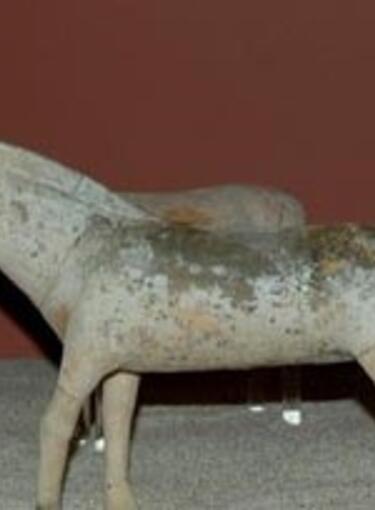Holy Monasteries
At a green plateau of the mountain Kallistrato, with an enchanting view over the valley of the river Aliakmona, near the village Panagia of Grevena, is situated the famous Monastery of Osios Nikanoras, dedicated to the Transfiguration of Christ. It is known as Monastery of Zavorda, due to the village of the same name that used to be in that area but does not survive anymore.
The monastery was founded by osios Nikanoras from Thessaloniki, possibly in the third decade of the 16th century. Nikanoras came from a wealthy family, at a young age he abandoned his riches, he became a monk and he lived as an ascetic at a small cave, today known as “hermitage of Nicanoras”, at mountain Kallistrato. Later, when Jeremias I was patriarch, he built the monastery over the foundations of an older church that stood at this location. The monastery flourished a lot, obtained significant property and for centuries was the most important intellectual institution in the whole area. At its facilities there was a school, which evolved to a great educational centre of Macedonia that operated continuously until 1912.
The monastery complex is surrounded by tall buildings that house the cells, the refectory and the rest of the auxiliary areas, they create a kind of precinct at the perimeter of the rock. At the centre of the yard is the catholicon. It is a cross-in-square church, with a dome that is supported with four columns and with a narthex on the western side. It belongs to the so-called “Athonite” triconch type, where apart from the eastern semi-circular conch of the altar area, there are semi-circular conches and the side walls, which are called “choirs”, because there stood the choirs of the chanters. On the north and south sides, at a later date, probably in the 18th century, they added two symmetrical chapels, of Agios Athanasios and Agios Ioannis Prodromos (St John the Baptist), respectively. At the second one, which does not survive today, housed the tomb of the founder of the monastery. In 1873, on the southwestern corner they erected the bell tower.
At the interior of the church the wall painting decoration still survives, which dates from difference periods of time. The initial wall paintings (after 1542) are attributed to one of the most important representatives of the so-called “School of Northwestern Greece”, Frangos Katelanos. According to an inscription, the dome was repainted in two stages, in 1592, and in 1869 by Manuel painter from Selitzi. Another repainting was made in 1889 by Constantine Chatzinotas from Naousa. The wall painting of the narthex date from 1835, whine in the 19th century they constructed the wooden carved screen.
It is a men’s monastery and it celebrates on the 6th (Transfiguration of Christ) and the 7th of August (day that osios Nicanoras died).
Informations
Additional
Date:
1542
Season:
Post-Byzantine
Celebrates:
6 August, 7 August
Holy Metropolis:
Grevena
Under the Supervision of:
Ephorate of Antiquities of Grevena
Address:
Panagia 51200
Access:
By car
Parking:
Free





















